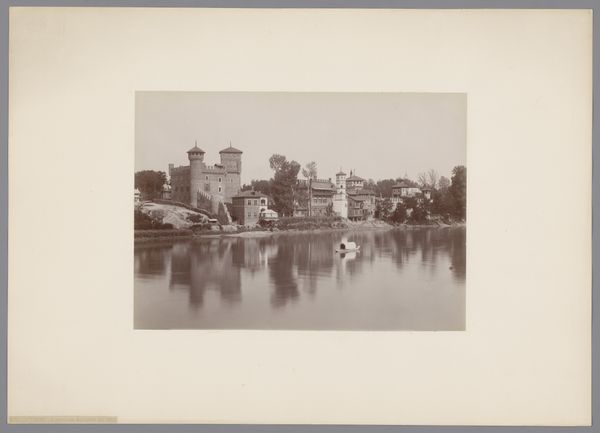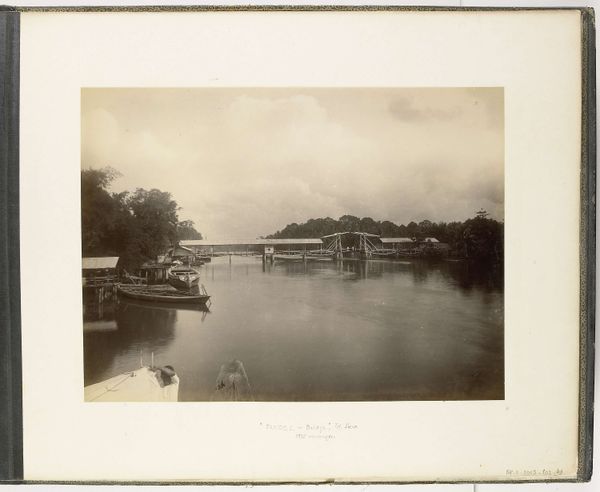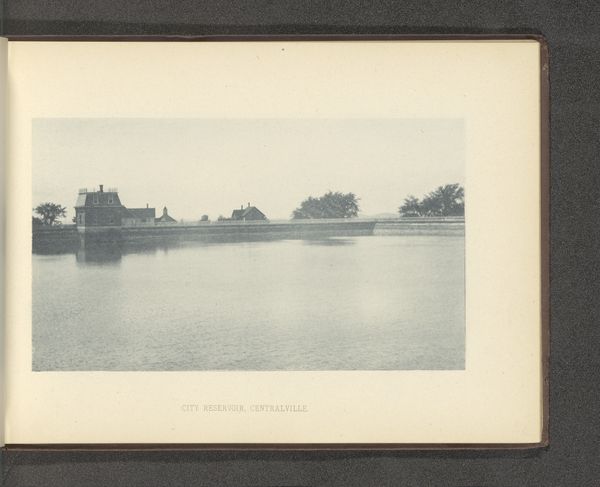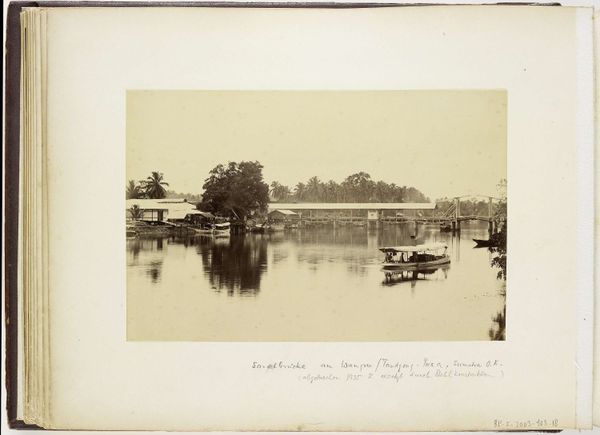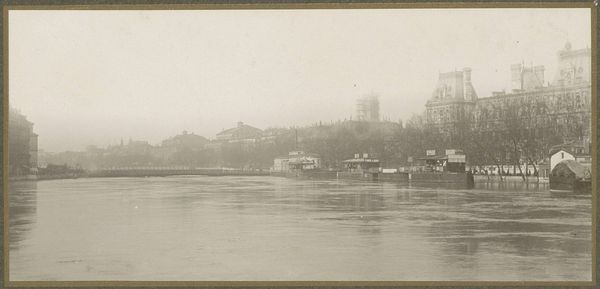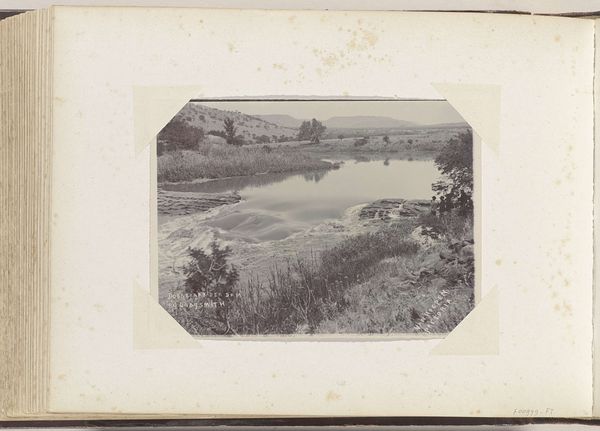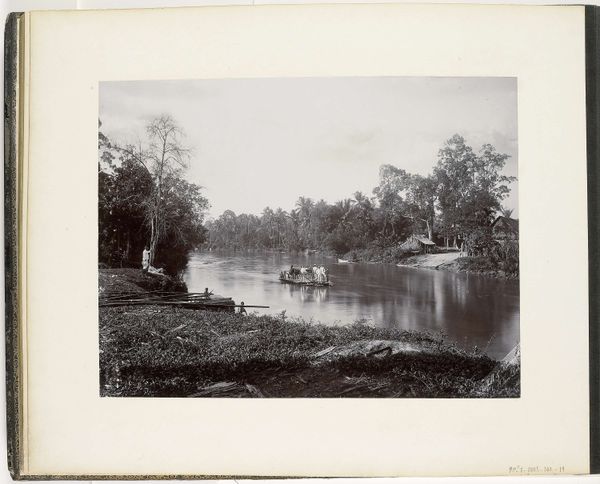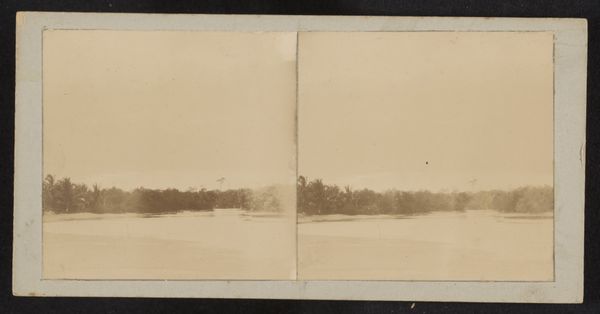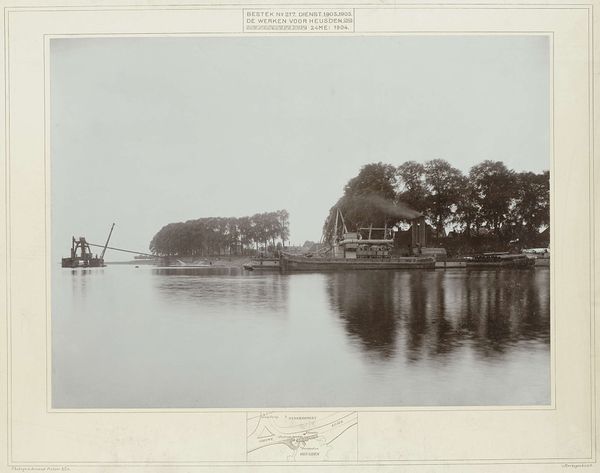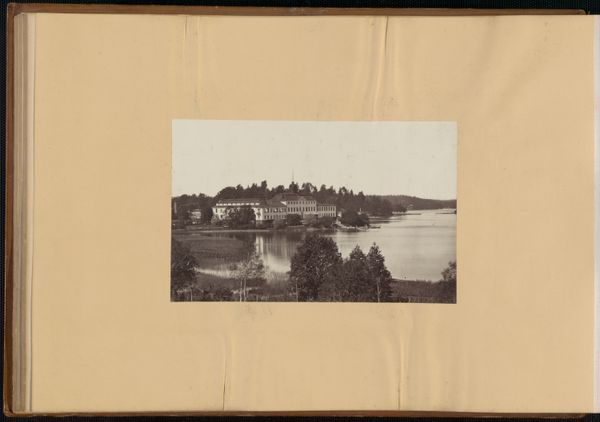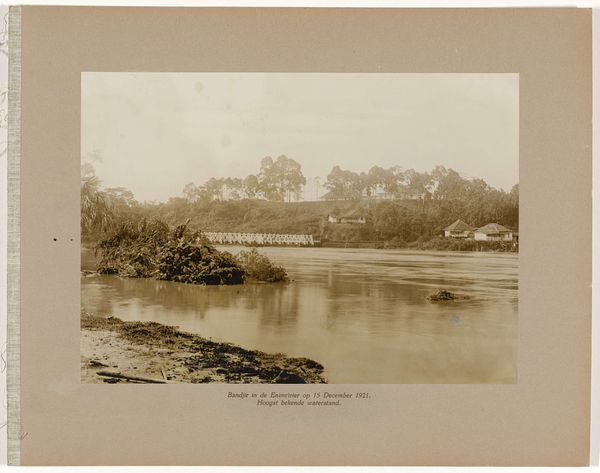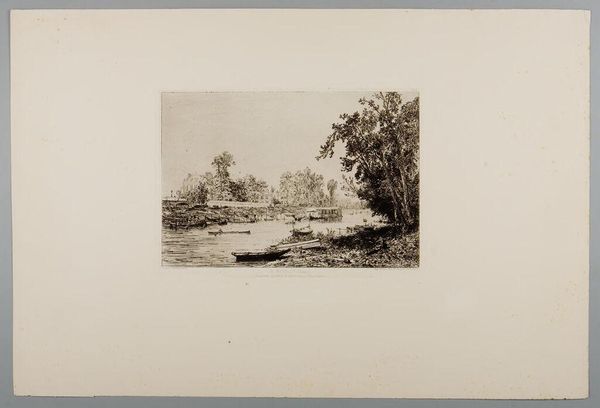
Pagina 93 van fotoboek van de Algemeene Vereeniging van Rubberplanters ter Oostkust van Sumatra (A.V.R.O.S.) c. 1924 - 1925
0:00
0:00
jwmeyster
Rijksmuseum
photography, gelatin-silver-print
#
landscape
#
photography
#
orientalism
#
gelatin-silver-print
#
realism
Dimensions: height 240 mm, width 310 mm
Copyright: Rijks Museum: Open Domain
Curator: This gelatin-silver print, taken between 1924 and 1925, is titled 'Page 93 from a photo book of the General Association of Rubber Planters on the East Coast of Sumatra.' Editor: It evokes a profound stillness, almost sepulchral, which makes me wonder about the broader context of this seemingly serene landscape. Curator: Well, this image comes from a book documenting the rubber plantations in Sumatra, which were established through extensive colonial exploitation. The “General Association of Rubber Planters” would have been at the heart of these operations. Editor: So, this photograph, far from being just a tranquil river scene, is actually a document of colonial extraction. We see barges, likely used to transport raw materials. How did these industrial practices intersect with the environment? Curator: Exactly. The image reveals how waterways became conduits for resource extraction, transforming natural landscapes into zones of production. Look at the detail in the barges themselves; that construction represents a system. Editor: The perspective, from the shore outward, feels deliberately crafted. The composition draws the eye towards the horizon, suggesting a narrative of progress, perhaps, masking the labor and ecological disruption behind rubber production. Who was behind the lens here? Curator: It's attributed to J.W. Meyster, and although we don't have specific records of his intentions, we know he was capturing these scenes for the association. Think of him as an agent, unintentionally exposing the underbelly of industrial development. Editor: What materials went into making this print beyond the silver gelatin? Chemicals for processing, paper pulped from trees perhaps cleared to make room for more plantations…every aspect speaks of the resources drained from this land. This photograph shows more than initially meets the eye. Curator: Absolutely, examining this work beyond the simple "landscape" designation lets us really unearth the complex story behind it. Thanks for drawing out these points. Editor: Likewise; these dialogues are how we uncover historical realities encoded in art.
Comments
No comments
Be the first to comment and join the conversation on the ultimate creative platform.
